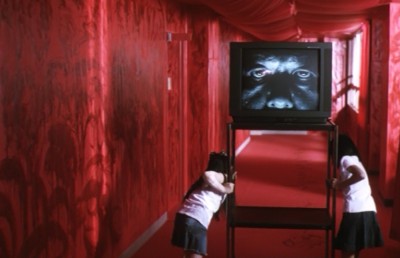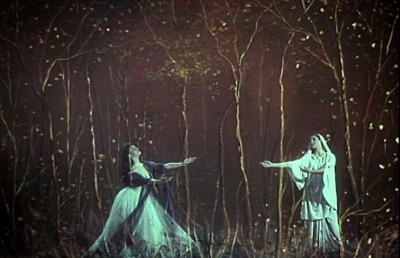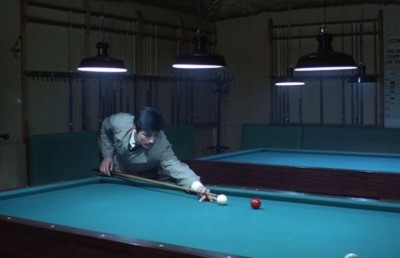Schrader’s Canon
The Rules of His Game

When I picked up the October 2006 edition of Film Comment and saw that Paul Schrader had an extended essay on the film canon, titled, Canon Fodder; I was excited at the prospect of reading the views of a film person whose works I have enjoyed and respected as a film critic, screenwriter, and director on a subject as interesting and far-reaching as the canon. As a film critic Schrader has written two essential critical works: an essay on film noir, “Notes on Film Noir,” Film Comment, Spring 1972, and a book entitled Transcendental Style in Film: Ozu-Bresson-Dreyer, 1972. As a screenwriter his works include The Yakuza, Taxi Driver, Raging Bull, and City Hall; and as a director his films include Blue Collar, Mishima: A Life in Four Chapters, Light Sleeper, Affliction and Auto Focus.
I became even more excited when I peeked inside to see that the essay was substantial, running 16 pages. In the preface Schrader reveals that the published essay is the remnant of a book he was commissioned to write on the film canon for Faber publishing, self-described as a sort of film version of Harold Bloom’s The Western Canon. Schrader accepted the offer and began headfirst into the project. He began by compiling a list of essential films, “…attempting, as best I could, to separate personal favorites from those movies that artistically defined film history” (Schrader, p. 34). In the process of selecting his list of potential films he realized his first dilemma: “Why was I selecting these films? What were my criteria?” He then began in earnest to research the book, which included going back to classics in the Philosophy of Art (Aesthetics), Art History and the history of Ideas. After this preliminary research, just before he was set to begin the chapters on the films and filmmakers, Schrader lost interest and abandoned the project. The fact that what is presented here is part of an intended larger project may be the root of what I see as a major problem with this attempt at creating a definitive canon, at least as it stands in this current form. Schrader writes, “In deference to the time I invested, I’m including, at the end of this essay, a list of films I’d planned to include in the film canon” (35). Read at face value, it appears that he came up with the canon before working through the critical process of selection. This hints at the central problem which I came to realize after reading the essay: there is no connection at all in terms of argumentation between the films that Schrader selects and the criteria which he spends considerable time outlining in the bulk of the essay.
Schrader acknowledges five criteria used to form his film canon. They are: Beauty (a central notion from the philosophy of aesthetics which relates to how an art work can “transform” reality), Strangeness (a quality which adds to the usual concept of originality, the magical, unpredictable and unknowable), Uniformity of Form and Content (the manner in which form and subject are fused together), Tradition (how the art work relates and responds to prior art), and Repeatability (how well an art work stands the test of time). Schrader then adds one “film specific” criteria, Viewer Engagement (how much a film involves the viewer emotionally and intellectually in its experience, as opposed to films which engage at a more passive level), while calling attention to an age old criteria, Morality, only to neutralize its relevance to the film canon because all great art strikes a moral chord and hence “no work that fails to strike moral chords can be canonical” (46).
As a point of comparison, Schrader criticizes Jonathan Rosenbaum’s collection of essays Essential Cinema: On the Necessity of Film Canons for not providing the criteria for the films selected. But is it any better to come up with a list of criteria and then stick a list of films at the end of the criteria without any semblance of how/why the films meet these criteria? Granted it would have been too time/space consuming in an essay for Schrader to have rationalized each of his 60 selected films (20 in the top echelon, the ‘gold category,’ and then 40 more divided between the ‘Silver” and “Bronze” categories), but some of his time would have been well spent applying the five criteria to at least the top 2, 3 or 4 films. Even applying the criteria to the number one film, The Rules of the Game, would have refined the methodology by giving readers insight into how the selection process worked itself out. Without this, the viewer is left to him or herself to decide how the films stack up to the criteria.
Perhaps that was part of Schrader’s point: to get the reader to ask questions and supply their own answer. For example, I can easily argue that a film left out of Schrader’s canon, The Cabinet of Dr. Caligari, stands up exceptionally well to the first four of his criteria. Beauty (it more than ‘transforms reality’ with its outlandish set design), Strangeness (only a handful of films have ever matched Dr. Caligari??’s bizarre diegetic world), Uniformity of Form and Content (wonderfully achieved with its use of jagged, distorted mise en scene to represent madness), and Tradition (in this case with the German Expressionist painting and theatre, rather than cinema, since it set the paradigm). The criteria of Repeatability is harder to argue, since the film does have the feel of a ‘museum piece,’ but from the standpoint of film studies university curriculum appearance it more than meets the criteria of a film which gets continually shown. So for the sake of argument, why is ??The Cabinet of Dr. Caligari left out of Schrader’s canon? What makes City Lights, The Crowd, or Metropolis (three other silent films in his canon) score higher in these areas? And if it is impossible to quantify such criteria, then that begs the obvious question: what need is there of any criteria outside of intuition and circumstance?
Without any transparency between the criteria and the process of selection, the list of films affixed at the end of the essay seems like nothing more than an informed list of “films I like enough to consider great.” One of the first points I make in my class on Film Aesthetics where we teach students to think critically about films is the distinction between a personal statement (“I like that film”) and an evaluative statement (“That film is good.”). Clearly a personal statement coming from an esteemed person in their field (like David Bordwell for example) bears more weight than if it came from the mouth of a first year undergraduate student. But this is a matter of degree rather than kind.
One thing Schrader is clear on is where he stands on the populist/elitist line. “Following the [Harold] Bloom model I decided it should be an elitist canon, not populist, raising the bar so high that only a handful of films would pass over. I proceeded to compile a list of essential films, attempting, as best I could [my italics], to separate personal favorites from those movies that artistically defined film history” (34). In doing so he goes up against one of his early mentors, Pauline Kael, whose seminal 1969 anti-film-as-high-art essay “Trash, Art and the Movies” he now cites as giving critical validation to a ‘dumbing down’ of movie art. The implication is that where there was once a battleground between popular film and art film (Kubrick, Antonioni, Kurosawa, Fellini, etc.), the playing field has been leveled out by a ‘postart’ attitude where such distinctions are no longer valid or necessary. Schrader cites Tarantino’s Kill Bill as the “apotheosis of Kael’s movies-as-trash ideology” (36). Another excellent contemporary film critic, Phillip Lopate, made a similar observation but restricted himself to American movies, in his essay “The Dumbing Down of American Movies.” Lopate argued (as others have done) for a connection between this ‘dumbing down’ of American movies and the triumph of faster cutting over mise en scene style, which has been achieved gradually since the 1950’s. (Although strangely enough, one of the films Lopate chooses as an example of this dumbing down, Bullets over Broadway, has an extremely slow cutting rate. So much for consistency.) Getting back to Schrader, not only does such a position suggest that popular films are less worthy of canonization than high art films [1], but it overlooks a whole body of important contemporary films which are as much ‘high art’ as the films made by the above mentioned directors from Kael’s period (Abbas Kiarostami, Bela Tarr, Tsai Ming-liang, Hou Hsaio-Hsien, Mohsen Makhmalbaf, Michael Haneke, Bruno Dumont, Lars von Trier, Hong Sang-soo, etc.). Many of the latter films/directors are from an area which Schrader seems to have a particular blind spot with, Asia (the only contemporary Asian film in his list is Wong Kar-Wai’s In the Mood for Love).
This would-be-dilemma raises several questions about canon formation: Should canons be historically or generically specific? Or, since Schrader has already done so by including only narrative film, where do you draw the line of distinction? Should there be a separate canon for high art films and popular genre films? Should there be a separate canon for documentary and experimental film? Should canons be broken down according to National cinemas (a North American canon, a European canon, an Asian canon, etc.). Should canons be divided along temporal/historical lines (a pre-sound era canon; a post-World War 2 canon, etc.)? Should there be a canon for historically or technologically important films which are no longer aesthetically interesting or culturally relevant (which could include films such as The Birth of a Nation, The Jazz Singer, Becky Sharp, etc.)? This position seems potentially relevant given than one of the main functions of a canon is as an aid to teaching –curriculum building– and since many university film studies courses are set up along such lines (Studies in Genre, National Cinemas, Third World Cinema, Film History to 1959, Non-Fiction Film, Experimental Cinema, Silent Cinema, etc.), it would seem natural for canon formation to be aligned with who/what it best serves. (After all, who else but university professors, academics, and critics pay any attention to canons, if we are to make a distinction between canons and ‘best of lists’?). These are the sort of questions which cry out from Schrader’s list, but which go unanswered.
As implied above, a common criteria in establishing a canon is that of ‘historical importance’ versus artistic merit. Any sensible film canon must decide how to negotiate between films that may seem old and creaky today but were important in their day for some historical reason. One such film often noted in this regard is Alan Crosland’s 1927 The Jazz Singer, a film whose style and content (‘old vs. modern’ cultural values) may appear dated today, but which holds considerable historical value as the first part-talkie feature (not the first sound film, as so often incorrectly stated) to create enough of a box-office stir to convince Warner Bros (and consequently the American film industry) of the commercial potential of sound film. Another problem film is D.W. Griffith’s Birth of a Nation (1915), a film whose impressive technical achievements uncomfortably announce a pernicious racist account of the post-Civil War South. It is not always evident whether or not this basic criteria informed Schrader’s canonical list of 60 films.
A close look at the films leads one to the conclusion that Schrader did not always succeed in separating his ‘likes’ from his canon formation (films that “artistically defined film history”). How else can one explain the appearance of Alexander Sokurov’s Mother and Son at number 21, Andrei Tarkovsky’s Nostalghia at 51, and Alexander Dovzhenko’s Earth at 54, but not one film by Sergei Eisenstein, Vsevolod Pudovkin, or Dziga Vertov? The Tarkovsky/Sokurov question is interesting because it points to how inevitable it is that subjective taste informs canon formation. In an interview Schrader conducted with Alexander Sokurov in Film Comment (November-December 1997) Schrader admits to Sokurov that he does not like Tarkovsky as much as he feels he should. He tells Sokurov, “I always felt a little guilty because I thought I should like Tarkovsky more than I did. My head was telling me I should like it, but my heart wasn’t going along. When I saw your films, my first reaction was, this is what I wanted from Tarkovsky” (p. 23). It is instructive to know that Schrader starts off the interview by citing that when a German publisher asked him to write a forward updating his book Transcendental Style in Film: Ozu-Bresson-Dreyer he had difficulty coming up with directors to include. He thought of Tarkovsky, but concluded “I didn’t feel he was working in the style I had tried to describe” (20). He then notes, “Since then, I’ve seen the work of Abbas Kiarostami and, more to the point, Aleksandr Sokurov: the transcendental cinema is alive in that troubled part of the world” (20). Hence his valuation of Sokurov above Tarkovsky owes more to how well he fits his prescribed transcendental film style than any other criteria. I have no qualms with the inclusion of Sokurov, a director who I greatly admire, but from the purely ‘objective’ standpoint of the five criteria I find it difficult to see why Sokurov ranks higher than Tarkovsky (or at least would like it explained).
The exclusion of the more political figures of Soviet cinema, Sergei Eisenstein and Dziga Vertov, and the inclusion of the triumvirate of Alexander Dovzhenko (Earth), Andrei Tarkovsky (Nostalghia) and Alexander Sokurov (Mother and Son) reflects (consciously or not) Schrader’s own preference for religiously/spiritually-informed cinema. The reason for excluding Eisenstein which he gives in a response to some reader letters printed on the Film Comment website pretty much confirms my point: “Eisenstein is a case in point. Potemkin and Alexander Nevsky are classics; they changed the way films were made. Yet, in rewatching them, I found their value was more historical than aesthetic. Would you really watch Eisenstein to learn more about what it means to be human or, to put it in grand terms, ennoble the soul? I think that we watch Eisenstein today to learn about political and film history.” Continuing on this point of personal taste, his second (Tokyo Story) and fourth (Pickpocket) top films are by two of the directors studied in his book Transcendental Style in Film, Yasujiro Ozu and Robert Bresson. The third director he studies in the book, Carl Dreyer, also appears at number 26 with The Passion of Joan of Arc. I have no particular objection with any of these films or directors selected –I would also probably include a film by each of these directors in my own canon– but only note this to reiterate the obvious: that canons formed by individuals will inevitably reflect personal taste (no matter how refined), interest, and a person’s specialized area of study. For example, where Japanese films are concerned, there is no doubt that if Noel Burch were to have compiled such a list, with his own stated personal interest (and agenda) of how form relates to issues of politics and ideology, he would have selected a Mizoguchi film from the 1930s, and not one from the 1950s (such as The Life of Oharu, selected by Schrader).
I would agree with Schrader than one can not spend too much time ‘equaling out’ a canon. As he says, “There is no equal-opportunity canon” (47). And yet, as social and political trends change, so do canons and it becomes inevitable that the affects of ‘equal opportunity’ make themselves felt (consciously or not) in canon formation. One can not accuse Schrader of being unduly biased to American cinema, since over half (31 of 60) of the films are non-American. [2] However, the one instance of Schrader’s list not adjusting to the actual reality of contemporary trends is in its almost complete neglect of Asian cinema. He could have largely circumvented this by sticking to his initial idea of limiting the canon to 1975, which is before the new Asian renaissance took hold; but in deciding against it he opens up the eligibility of more contemporary cinema to have an impact on the canon, which his canon fails to do. The inclusion of only four Asian films, three Japanese (Tokyo Story, The Life of Oharu, and High and Low) and one Chinese/Hong Kong (In the Mood for Love), and only one Asian film made after 1963, runs counter to the undisputed evidence that some of the most interesting cinema of the last twenty years has come from Asian nations (Japan, Iran, Hong Kong, China, the Republic of Korea). In his online response Schrader admits that his canon is a product of his upbringing: “The fact that I’m an American born of parents of European descent, the product of the Western educational system, of course colors my perceptions.” Such an admission, while a reason, is still hard to accept as a justification for neglecting such an important cultural shift in recent cinema, especially with someone whose level of sophistication would lead me to think is well aware of current trends in international cinema. Anyone who accepts the taunting task of forming a canon should at least make an effort of going beyond their known biases (as difficult, if not impossible, as that may be). I just get the sense that perhaps Schrader did not try hard enough.
While my judgment of Schrader’s canon may appear harsh, I must admit that after repeated scans of the list I became less shocked at what was missing and began to appreciate what was there. Like the often overlooked Donald Cammell/Nicolas Roeg film Performance. I began to smile and take perverse pleasure at the quirks and oddities of Schrader’s canon. For example, while excluding Eisenstein because his films tell us nothing about “what it means to be human or, to put it in grand terms, ennoble the soul,” he excludes such luminous humanists as Roberto Rossellini, Vittorio De Sica, and all of neo-realism, while including such Italian films as Sergio Leone’s Once Upon a Time in the West, one of the most cynical and nihilistic westerns ever made (but which I thought was one of Schrader’s most inspired selections), The Conformist, Bernardo Bertolucci’s bleak, terrifying account of Italian Fascism, and La Notte, Michelangelo Antonioni’s paean to emotional fragility and human alienation amid Italian modernity (and by far the most pessimistic of Antonioni’s alienation tetralogy). I wondered how he could insist that the bar be raised as high as possible (“The higher the better”), and then include The Big Lebowski at number 40! While disappointed that there was not one horror film in the canon, from someone who has directed two (The Cat People, Dominion: Prequel to The Exorcist), I was surprised to find out that there are five westerns in his canon. With the inherent possibility of such contradiction and inconsistency, it became evident that canon formation is not for the feint of heart. Schrader should be applauded for providing a reference point for further generations to contest. After all, what type of a canon would it be if it did not?
An online listing of Schrader’s 60 films can be read on Jeffrey M. Anderson’s website Cinematical.
Bibliography
Paul Schrader. “Canon Fodder.” Film Comment. September/October 2006, 33-49.
Endnotes
1 To be fair, this is not the case with Schrader’s list, which includes a good number of genre films, including several westerns, musicals, science fiction, and film noir (but no horror, damn it!).
2 Although from a wholly international/global perspective, one can argue that 29 out of 60 films is still too much. There is little doubt that American cinema is the single most important and influential of national cinemas. But we should not forget the dominance of Scandinavian and Italian cinema in the pre-World War 1 period, the strength of the Japanese film industry from the 1930s onward, the many important post-1950s New Wave cinemas from Europe, and the noted explosion of excellent Asian cinemas of the last twenty years. For the sake of comparison, here is a National breakdown of Schrader’s canon: US (29), France (9), Italy (8), Russia/Soviet Union (3), Japan (3), Great Britain (3), Spain (2), Germany (2), Sweden (1), Hong Kong (1), Denmark (1) and Algiers (1) [the above includes 3 co-productions: The Battle of Algiers (Italy/Algiers), That Obscure Object of Desire (Spain/France), and Nostalghia (Italy/Soviet Union). Seen from this perspective, has the American film industry been more important than those of France, Italy, the Soviet Union, Japan, Great Britain, and Germany combined?














